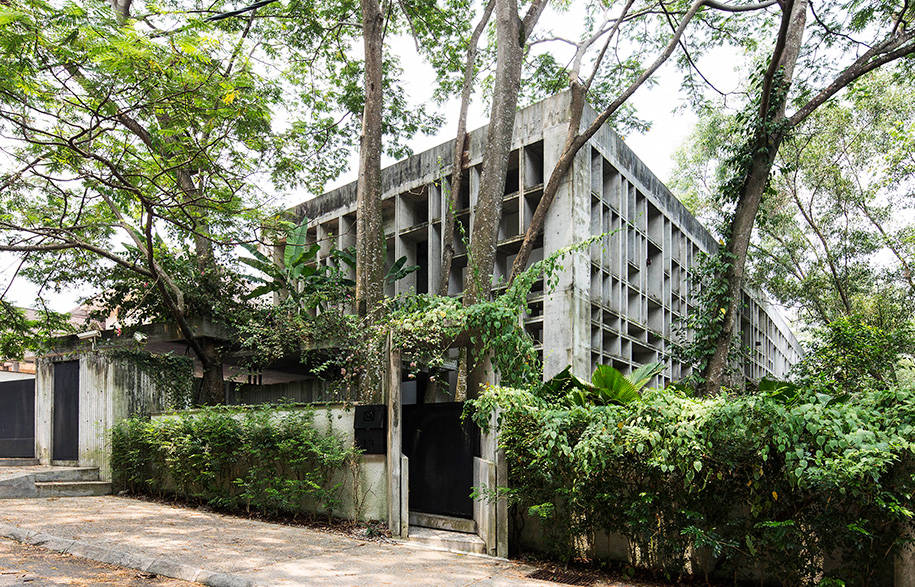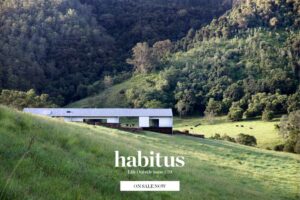At a glance, Kuala Lumpur projects a very specific attitude to architecture: the bigger, the better. Over the years, this excess-is-best approach has given way to extravagantly realised buildings whose impetus hinge on spectacle rather than human-scale concerns or respect for context. Happily, the proliferation of these super-sized structures seems to have an upside, prompting renewed interest in intimate, pared-down dwellings that display an adherence to modernist principles as well as an affinity with their immediate surroundings.
Situated on a slope in the affluent suburb of Damansara Heights, the Chempenai House is one such example. For a number of reasons, the house, designed by local firm WHBC Architects, is something of a diamond in the rough of a neighbourhood dominated by nouveau riche mansions and luxury condominiums. In contrast to the architecture of its more flamboyant counterparts, its stripped down concrete surfaces don’t vie for attention, and if its steep, off-the-beaten-track location is any indication, it doesn’t want to be found either. Indeed, it’s difficult not to entertain Batcave comparisons, walking up Jalan Chempenai to catch a glimpse of the half-hidden rhomboid box peeking clandestinely through a romantic blur of tropical trees and vegetation.

Despite the stark presence of the concrete, the building blends effortlessly into its leafy surrounds. The effect is further accentuated by the house’s most prolific design feature: an unusual, egg-crate shaped façade that was cleverly envisioned by the architects as a sun-filtering device. Given the intense tropical climate, WHBC co-founder BC Ang focused his energies on safeguarding the house from extreme heat and sunlight. “The structure naturally allows daylight to filter through but resists radiation,” he offers. The perforated facade, he says, also allows for the existing undergrowth to unfurl over surfaces in a consistent manner as the house is slowly reclaimed by nature over time. The notion of a hidden sanctuary is thus brought to the fore as visual harmony is achieved through this gradual marriage of building and jungle.
Read the full story in Habitus issue #33, available now.
WHBC Architects
whbca.com
Words by Adele Chong.
Photography by Ben Hosking.


















